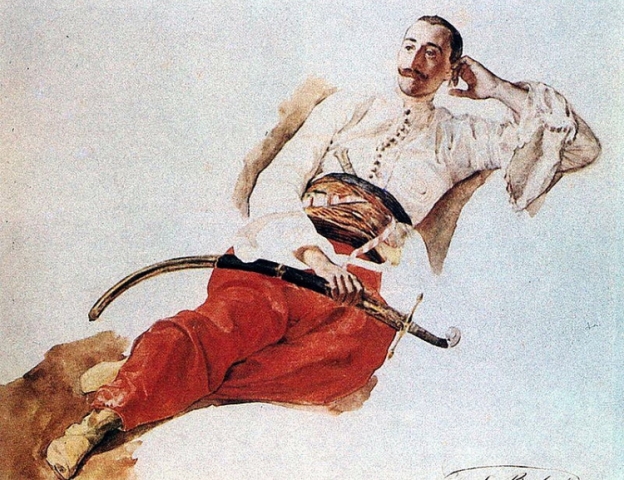The Seljuk Han of Anatolia
Tschihatscheff
(1801-1890)

portrait of Tschihatscheff by Karl Bryullov (1835)
On the list of the intrepid travelers to Asia Minor in the 19th century, the Russian Pierre Alexandre Tschihatscheff stands out from the others.
Tschihatscheff (1812-1890) is usually known by the French transcription of his name. He was born near St Petersburg, in 1812. Tschihatscheff finished his education abroad, attending the lectures of famous geologists and mineralogists, and then worked in Paris, whence his perfect French in which he wrote many of his works. Although he was not a professional scientist per se, Tschihatscheff was able to dedicate himself to his interest in scientific research due to his personal fortune inherited from his mother and his society connections. These produced essential scientific results, due to the observation of their author and careful treatment of the scientific material collected during expeditions, to which Tschihatscheff attracted prominent specialists in different fields, such as the famous cartographer Kiepert.
In 1842 he led a scientific mission to the Altai Mountains, where he found the richest coal deposits in the world, which he called the Kuznetsk Coal Basin. He also studied the culture, life, and customs of various nomadic and settled tribes of this region. In honor of his work here, a mountain range in Altai, the Chikhachyov Range, near the border of Russia, China and Kazakhstan, is named after him.
After this expedition, he turned to the study of Asia Minor, to which he gave 20 years of his life. In 1845 he became an attaché of the Russian Embassy in Constantinople for two years, using the opportunity to learn Turkish. He then resigned from the diplomatic service. Trading the cosseted cushions of a chamberlain for a hard saddle, he set out on a series of expeditions in Asia Minor from 1847 to 1863. After six years of hard and often dangerous work, the results appeared in a luminous work, Asie Mineure: description physique, statistique et archéologique de cette contrée (4 volumes, with 3 atlases, 1853–69), written in conjunction with many specialists. This work discussed the geography, geology, climate, zoology, botany and paleontology of Asia Minor and has become a classic.
In this text, he leaves references to the Alara, Kadin, Dokuzun, Kesikköprü, Obruk, Ibipse and Aksaray Sultan Hans. He was not an archeologist, but a naturalist and a geologist, so his observations concerning hans are a bit different than the other travelers who came to Turkey, as he was not concerned with analyzing the architecture or decoration of buildings, or producing squeezes of antique inscriptions. He remarks on different topics, botanical mostly, give an appealing accessibility to his journal, such as his descriptions of the orange groves of Alanya and the gardens of Meram (Konya). He merely noted the location of the hans he encountered, and dutifully included the scorching noontime temperatures of the day, which obviously left an impression on him. He does not discuss the hans in detail, perhaps leaving one or two general comments (such as the "geologically strange" lake behind the Obruk Han), but his work offers a solid reference marker for the existence of these hans at this time.
Aside from the above-mentioned book, he published another title on Turkey, Le Bosphore et Constantinople (1864, another ed. 1877).
After completing his research in Asia Minor, Tschihatscheff ended his great travels and expeditions, and died of pneumonia in Florence in 1890.